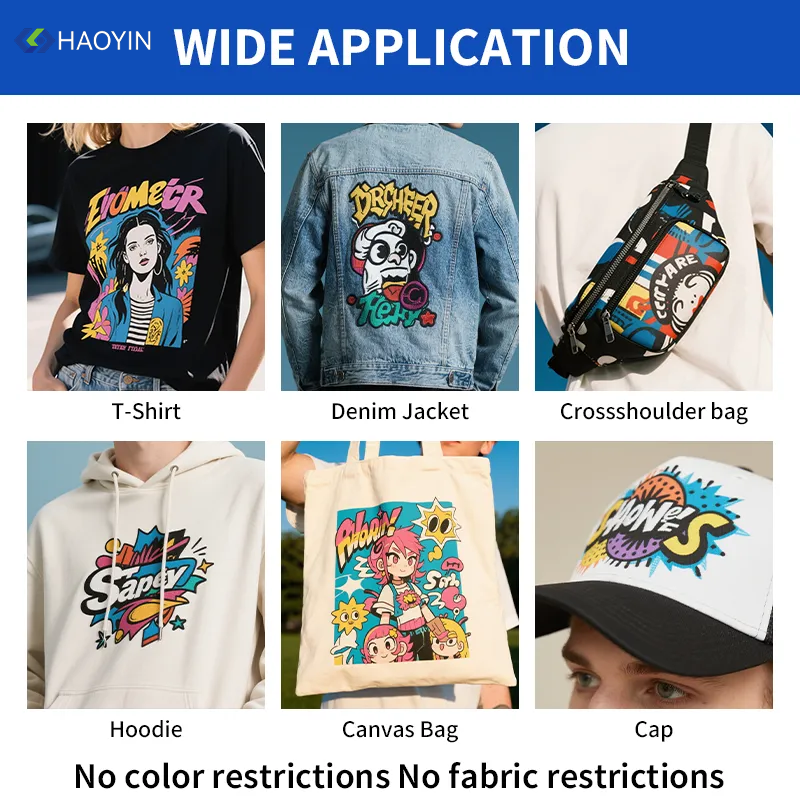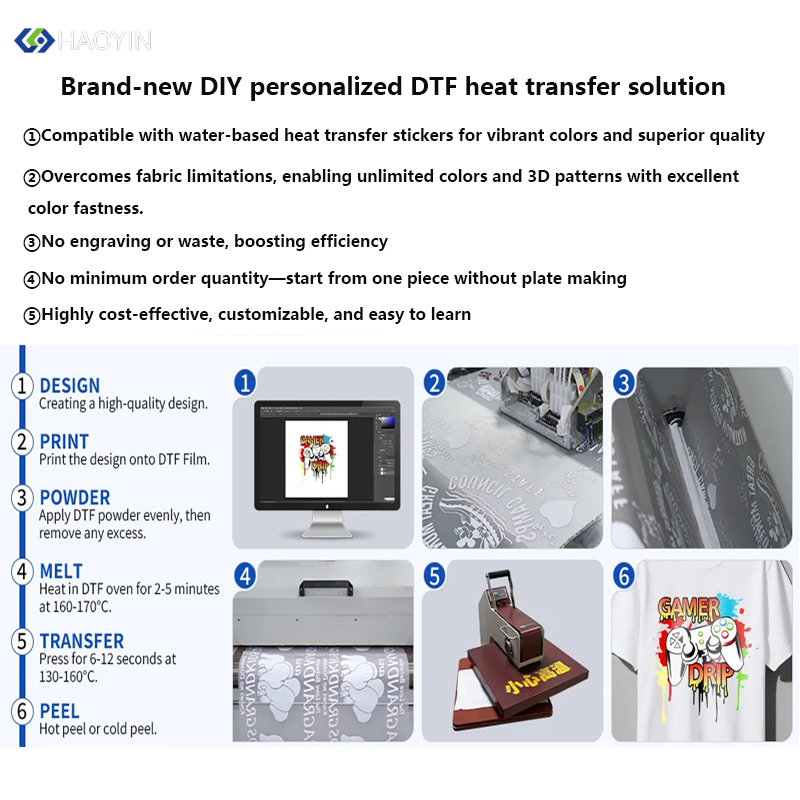Recently, some customers have asked why DTF prints may curl at the edges after heat pressing. If curling occurs, how can we fix or remedy it?
Today, Guangzhou Haoyin will walk you through the details!
DTF edge curling is usually caused by the following factors: material issues, improper heat press temperature, insufficient pressing time, and equipment problems.

1. Material Issues:
DTF printing is applied to the fabric surface. If the fabric material is unsuitable for heat transfer, it may deform or shrink during pressing, leading to curling at the edges.
2. Improper Heat Press Temperature:
When doing DTF printing, both overly high and overly low heat press temperatures can cause curling. Excessive heat can deform the fabric, while insufficient heat may result in inadequate adhesive activation, preventing the print from bonding firmly.
3. Insufficient Pressing Time:
If the pressing time is too short, the DTF adhesive may not fully melt and penetrate the fabric fibers, resulting in a weak bond and edge curling.

4. Equipment Issues:
Problems such as inaccurate temperature control, uneven pressure, or an uneven heat press platen can cause inconsistent heat transfer, leading to curling.
How to prevent curling:
When selecting fabrics and designing transfers, consider the suitability of the material. Use the correct heat press temperature and time settings.
Also, using reliable DTF printing equipment and following proper operating procedures will greatly reduce curling issues.
In practice, it’s best to test on a small piece of fabric first to determine the optimal transfer parameters.
If curling occurs after pressing:
You can re-press the print to achieve the desired bonding and finish.
 Hot News
Hot News2025-11-20
2025-11-13
2025-11-06
2025-10-30
2025-10-23
2025-10-16